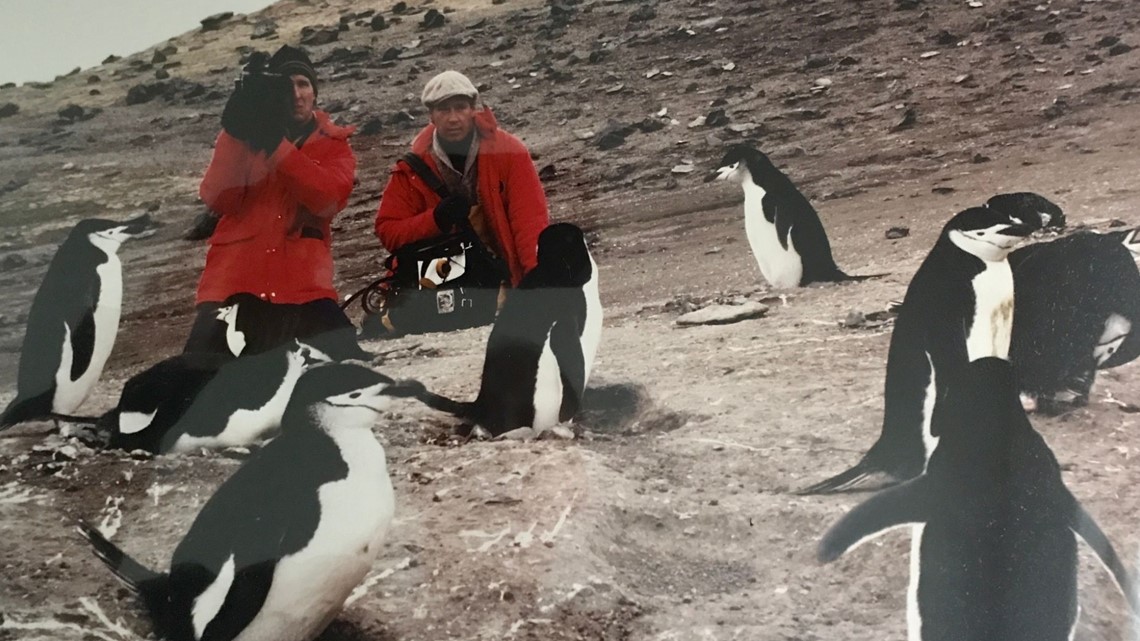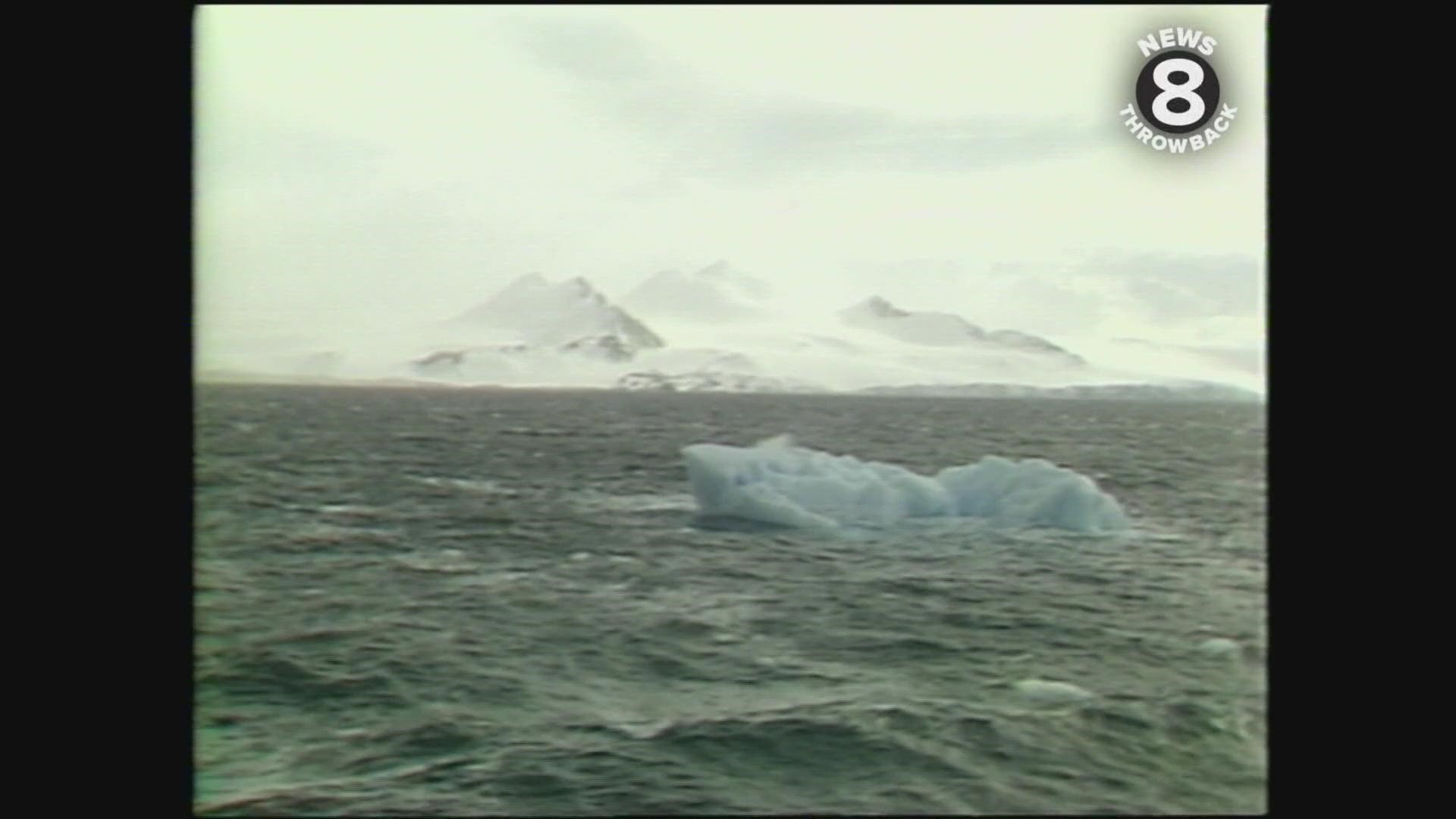News 8 traveled to the bottom of the world in February 1988. Reporter Loren Nancarrow and photojournalist Bill Tracey took the harrowing journey from San Diego to Antarctica to deliver a five-part special that aired on five consecutive newscasts. We are pleased to present it once again after 33 years. It's a fascinating look at the people and animals that inhabit the coldest place on Earth.
The full special can be seen above or here on YouTube. Here are some of the highlights of the series:
Arrival in Antarctica: 'A place of extremes: Extreme cold and extremely beautiful'
First up in the series, the News 8 crew arrives aboard the cruise ship Explorer which Loren describes as a science platform and sometimes a floating embassy. The journey is long and tedious - and includes some seasickness for the News 8 team.
Loren shares some history of Antarctica and the researchers who have traveled there - some who did not survive. He also talks about the current inhabitants and what it takes to live in such a remote place.
Penguins: 'Hard to imagine an animal more appealing than this'
Next up are the penguins, of course - the first thing you see when arriving or leaving Antarctica, Loren says. Ornithologist Frank Todd, a foremost authority on penguins and the man responsible for the Penguin Encounter at SeaWorld San Diego speaks about his ongoing research of the birds and their colonies.
Ice, ice and more ice
Antarctica is a land of mysteries and some of the answers can be found in the icebergs. Two weeks into the trip, Loren learns more about what icebergs reveal; the animals who live on floating ice slabs, and speaks with wildlife photographer Wolfgang Kaehler about his craft capturing the untouched beauty of Antarctica.
'Wide open to research'
Antarctica's unique role as a research hub is explored in the next part of the series. The treacherous conditions to study the untapped land are seen first-hand as Loren and the crew observe scientists just trying to get ashore.
'The cold is a constant barrier to comfort'
As Loren and the News 8 team's voyage comes to an end, they take one last look at what survival means in Antarctica - to plant life, animals and people. "A year is the longest most people can take."
Photojournalist Bill Tracey shares his memories of the trip:
"[It] was a Sea World-sponsored trip to accompany the curator of birds, Frank Todd, on a mission to gather different varieties of penguin eggs for their newly opened Penguin Encounter.
It involved two weeks of bobbing around on high seas dropping in on various penguin rookeries in Antarctica's "banana belt" region near the arctic circle. It was called this because of its "balmy " December weather. Balmy is still relative in that the ship we sailed on later hit an iceberg in those waters and sank.
Another side note...Loren and I were both removed by law enforcement from the ship before it departed Chile for not informing the Pinochet government that we were leaving the country. We were given this admonition by Chilean customs when we arrived in Santiago but didn't think this trip counted since Chile claimed most of the parts (illegally) of Antarctica we were visiting.
We were held separately in holding cells in a police station in Tierra del Fuego for about an hour before being taken back to the ship. At this point, we had both begun to develop symptoms of food poisoning from something we had eaten in Santiago a day earlier, so sitting in an isolated holding cell was very stressful, to say the least.
The town of Punta Arenas, where we departed, was a fascinating place but we weren't there long enough to see much.
Also in December the sun really never sets...just kinda does a little circle around the horizon. But that made the light beautiful."


View the five-part series on YouTube below or in the video player above:

